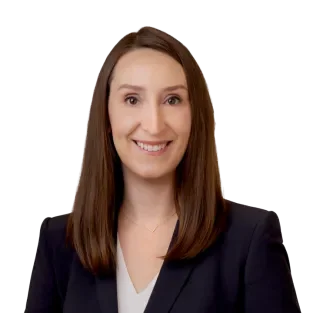ASAP
Philadelphia’s COVID-19 Paid Leave Ordinance for 2022 and 2023
UPDATE: Philadelphia's Department of Labor updated COVID-19 pandemic paid sick leave resources to say the law took effect on March 10, 2022. More recently, it updated the webpage to say the law took effect on March 9, 2022.
On March 3, 2022, Philadelphia, Pennsylvania’s City Council adopted and sent to the mayor (who we expect to sign) Bill # 220051-A, an ordinance requiring covered employers to provide paid “COVID-19 Leave” starting immediately (when the law officially takes effect upon signature by the mayor) and through December 31, 2023 (though the city council discussed the possibility of later amending the ordinance to expire sooner should the COVID-19 situation improve). To employers that had to comply with Philadelphia’s 2021 COVID-19 paid leave law, the ordinance will look very familiar. A few provisions, however, are slightly different, most notably the amount of leave employers must provide. But, for other employers, the requirements will be entirely new because the latest version of COVID-19 paid leave in Philadelphia will cover more employers than did the 2021 ordinance. Below we cover what this iteration of COVID-19 paid sick leave requires, and highlight how it differs from last year’s law.
Covered Employers and Employees: The ordinance applies to employers with 25 or more workers, but it does not explain how to count employees or whether the calculation is limited to employees in Philadelphia. When Littler contacted Philadelphia’s Department of Labor concerning a similar question about the 2021 law, however, we were told the standard is “covered” employees.
To be eligible for COVID-19 Leave (i.e., a covered employee), an employee must have worked for a covered employer (for 90 or more days was the 2021 standard) and: 1) work in Philadelphia; 2) normally work in Philadelphia but currently telecommute from outside the city as a result of COVID 19; or 3) work from multiple or mobile locations but spend 51% of the time working in Philadelphia. Generally, for employers with a unionized workforce, a bona fide collective bargaining agreement (CBA) can waive the ordinance’s requirements if it: (a) includes an explicit waiver in clear and unmistakable terms; (b) provides a comparable paid leave benefit; and (c) is in effect contractually. Additionally, in a provision that differs from the 2021 law, the law does not apply to construction craft employees covered by a CBA between a labor organization and one or more employers engaged in the construction industry.
Amount of Leave: Employers must provide – rather than have employees accrue – the following amounts of paid COVID-19 Leave, which is less than what they had to provide under the 2021 ordinance:
- Employees who work 40 or more hours per week receive at least 40 hours, unless their employer provides a greater amount (in 2021, it was 80 hours).
- Employees who work fewer than 40 hours per week receive an amount equal to the amount of time they are scheduled to work or actually work on average in a 7-day period, whichever is greater, unless the employer provides a greater amount.
- Employees whose weekly schedule varies receive the average number of daily hours that the employee was scheduled over the past 90 days of work, including hours for which the employee took leave of any type, multiplied by 7.
The ordinance assumes executive, administrative, professional, and outside sales employees who are exempt under the federal Fair Labor Standards Act work 40 hours per week unless their normal work week is less than 40 hours, in which case employers calculate the amount of COVID-19 Leave using the employee’s normal workweek.
Using Existing Paid Leave Benefits
In general, COVID-19 Leave benefits are in addition to all other paid leave benefits an employer provides, and an employer cannot reduce the amount of COVID-19 Leave it must provide by the amount of paid leave an employee previously received. Under limited circumstances, however, employers can use pre-existing benefits to satisfy COVID-19 Leave requirements in whole or part:
- Teleworkers: When employees complete the majority of their work through telework, employers need not change existing policies or provide additional paid leave if existing policies provide teleworking employees with at least 80 hours of paid leave in 2022, and employees can use such paid leave for the same purposes and under all of the same conditions as set forth under the ordinance.
- Generous Paid Leave Policies: An employer need not change an existing leave policy or provide additional paid leave to employees if its policy provides at least 120 hours of paid time off in 2022 whether or not such leave is specifically designated as sick leave, if employees can use such leave for the same purposes and under all of the same conditions as the ordinance requires (in 2021, it was 160 hours). Additionally, a provision that differs from the 2021 ordinance provides that, for employers that operate on a 7.5-hour workday and consider an employee working 37.5 hours a week to be a full-time employee, the amount of leave required to qualify for this exemption is 112.5 hours.
- COVID Paid Leave Policies: If an employer adopted a policy that provides employees additional paid time off specifically for use during COVID-19, it may substitute leave under that policy for COVID-19 Leave to the extent they coincide. Employers must provide additional COVID-19 Leave only to the extent that the ordinance’s requirements exceed their COVID-19 paid leave policy’s requirements. Unlike the 2021 law, there is no express requirement that the policy had to be adopted on or after March 6, 2020, but it is unlikely many employers adopted COVID-19 leave policies before that date.
Covered Uses: The law’s covered uses provision is nearly identical to that of the 2021 law, except for a few minor changes. Leave is available for immediate use when employees are unable to work due to one or more of the following reasons:
- A public official, public health authority, health care provider, or an employer determines that the employee’s presence on the job or in the community would jeopardize others’ health because of the employee’s exposure to COVID-19 or the employee is exhibiting symptoms that might jeopardize others’ health, regardless of whether the employee has a positive COVID-19 diagnosis or test result;
- To care for a family member due to a public official, health authority, health care provider, or employer’s determination that the family member’s presence on the job or in the community would jeopardize others’ health because of the family member’s exposure to COVID-19 or the employer’s determination that the family member is a danger to others’ health because the family member is exhibiting symptoms that might jeopardize others’ health, regardless of whether the family member has a positive COVID-19 diagnosis or test result;
- An employee needs to: (i) self-isolate due to a positive COVID-19 diagnosis or test result; (ii) self-isolate due to experiencing symptoms of COVID-19; or (iii) seek or obtain medical diagnosis, care, or treatment if experiencing symptoms of an illness related to COVID-19;
- To care for a family member who: (i) is self-isolating due to a positive COVID-19 diagnosis or test result; (ii) is self-isolating due to experiencing symptoms of COVID-19; or (iii) needs medical diagnosis, care, or treatment if experiencing symptoms of an illness related to COVID-19;
- To care for a child whose school or place of care has been closed, or whose childcare provider is unavailable, due to precautions taken in response to COVID-19;
- To obtain a COVID-19 vaccine, including a booster; or
- To recover from any side effect (in 2021, injury, disability, illness or condition) related to a COVID-19 vaccination.
Employees can use COVID-19 Leave in the smaller of hourly increments or the smallest increment the employer’s payroll system uses to account for absences or use of other time. An employer cannot require an employee to use other paid sick leave available to the employee, e.g., pre-COVID statutory Philadelphia paid sick leave, before the employee is eligible to use COVID-19 Leave, unless state or federal law requires otherwise.
Requesting, Verifying & Documenting Leave: Employees must provide notice to their employers if practicable and as soon as feasible, but only when the need for leave is foreseeable. The law does not specify the amount of notice, if any, employees must provide for unforeseeable absences. An employer can request that an employee submit a self-certified statement asserting that leave was taken for a covered reason under the ordinance.
Rate of Pay: Employers must pay COVID-19 Leave at the employee’s regular rate of pay, and with the same benefits (including health care benefits) the employee normally earns, which cannot be less than the state minimum wage. To calculate the “regular rate of pay,” employers use the same formula they would for overtime purposes under state law.
Employer Notice & Recordkeeping Requirements: Within 15 days after the ordinance’s effective date, employers must provide employees with a notice of rights that explains:
- Employees are entitled to leave, the amount of leave, and the terms of its use guaranteed under the law;
- Retaliation against employees who request or use leave is prohibited and that each employee has the right to file a complaint or bring a civil action if leave required by the law is denied by the employer or the employee is retaliated against for requesting or taking leave.
In 2021, Philadelphia’s Department of Labor published a model notice that satisfies these requirements; we expect the agency will do the same for the 2022 ordinance in short order.1 Employers can satisfy their notice obligations by conspicuously displaying the required notice in the workplace. If an employer does not maintain a physical workplace, or an employee teleworks or performs work through a web-based platform, the required notice must be provided to employees via electronic communication or a conspicuous posting in the web-based platform. The notice must be in English and in any language that is the first language spoken by at least 5% of the workforce. Additionally, similar to their obligation under the pre-COVID Philadelphia paid sick leave ordinance, employers must include the requisite notice of rights in any employee handbook.
For two years, employers must keep records documenting: hours worked; leave taken; and payment made for leave taken.
Prohibitions: The ordinance includes numerous prohibitions, expressly or by incorporating standards in the pre-COVID Philadelphia paid sick leave ordinance. For example, as a condition of providing COVID-19 Leave, employers cannot require employees to search for or find a replacement to cover the hours during which they are using leave. Employers cannot reduce the amount of any paid leave an employee could use or accrue under the employer’s existing policies as of the ordinance’s effective date. Employers cannot take retaliatory personnel action or discriminate against an employee who exercises rights protected by the ordinance.
Next Steps: As the ordinance will take effect immediately, employers should quickly review the law’s requirements to determine whether and how they can comply via existing policies or, alternatively, how to develop a compliant, standalone benefit. This step is particularly important for employers that are considering reducing or eliminating their voluntary COVID leave benefits as COVID-19 case numbers improve and CDC guidance continues to evolve.





